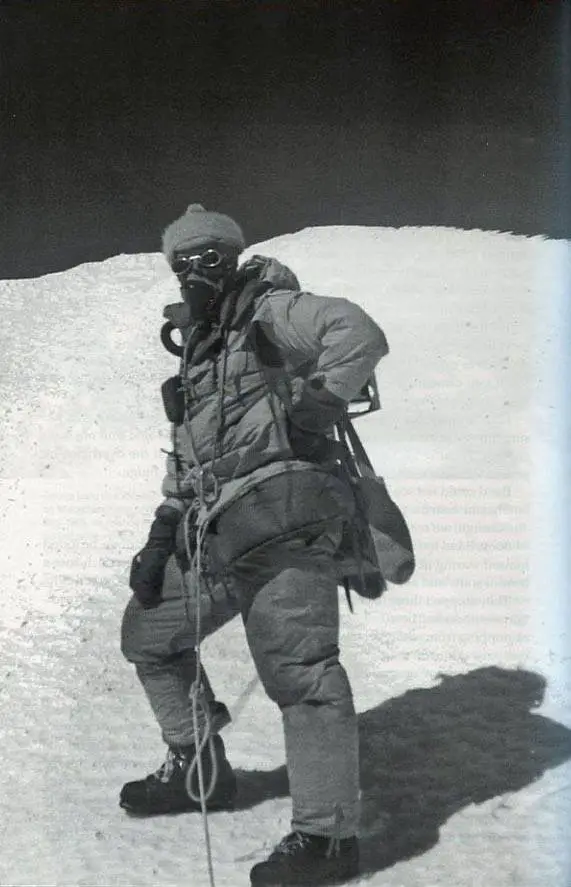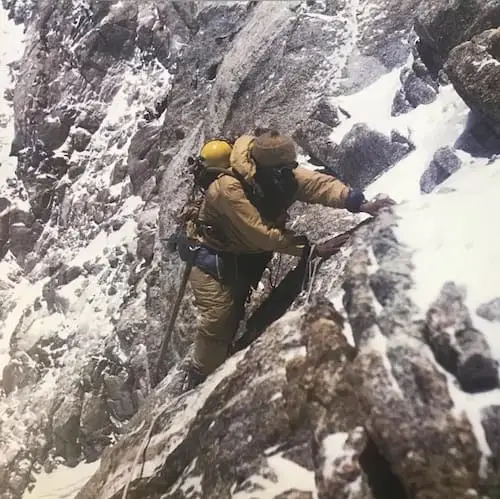George Christopher Band OBE (2 February 1929 – 26 August 2011) was a distinguished English mountaineer and was the youngest climber on the historic 1953 British Mount Everest Expedition. George Band is also known for becoming one of the first to conquer Kangchenjunga, the awe-inspiring third highest mountain on the planet.
Throughout his remarkable career, George Band demonstrated exceptional skill, courage, and determination, embarking in mountaineering, the national service and geology. This blog recounts the life of George Band, the first to summit Kangchenjunga.
The Extraordinary life of George Band:

George Band was born in Taiwan and received his education at Eltham College. After serving in the Royal Corps of Signals during his National Service, he pursued his interest in Geology at Queens’ College, Cambridge, and later studied Petroleum Engineering at Imperial College, London.
While still a student at Queens’, Band’s passion for climbing emerged, and it was this fervor that led him to become the youngest climber on the momentous 1953 British expedition to Mount Everest. This historic expedition saw Sir Edmund Hillary and Tenzing Norgay achieve the extraordinary feat of being the first to reach the summit of the world’s tallest peak.
While his early years were marked by daring mountaineering successes, George Band’s professional journey predominantly revolved around the field of oil and gas exploration. However, he could never escape his love for climbing. Whereas, in his later years, he trekked to the south-west Base Camp of Kanchenjunga in Nepal at the age of 76. His influence and dedication to mountaineering extended beyond his own endeavors; he served as the president of both the Alpine Club and the British Mountaineering Council, and his travels took him across the globe.
In recognition of his distinguished contributions, George Band was appointed Officer of the Order of the British Empire (OBE) in the 2009 New Year Honors. His passing on 26 August 2011, in Hampshire, England, marked the end of a life filled with adventure, exploration, and inspiring achievements. At the age of 82, George Band left behind a legacy that continues to inspire and captivate the hearts of mountaineers and adventurers worldwide.
Band’s literary contributions:
Band’s literary contributions were equally impressive, with notable books such as “Road to Rakaposhi” and “Everest 50 Years on Top of the World” – the official history commissioned by the Mount Everest Foundation, Royal Geographical Society, and the Alpine Club in 2003. Additionally, in 2007, he authored “Summit,” a book commemorating 150 years of the Alpine Club. His dedication to promoting mountaineering and exploration also led him to serve as the Chairman of the Himalayan Trust (UK) and as an Appeal Patron for BSES Expeditions, a youth development charity specializing in challenging scientific research expeditions to remote wilderness environments.
Books Published by George Band:
Band published books about his adventures and amazing life including the following.
- Road to Rakaposhi (1955)
- Everest: 50 Years on Top of the World (2003)
- Summit (2006), a celebration of 150 years of the Alpine Club.
George Band The First to Summit Kangchenjunga

At 05:00 on May 25th, 1955, Joe Brown and George Band eagerly set out for their ascent up the Gangway, encountering favorable snow conditions. They had devised a plan to avoid a lengthy route along the west ridge to the summit by veering to the right off the Gangway onto the southwest face, aiming to reach the ridge in close proximity to the summit. Although they had spotted a suitable line from below, the exact point to turn off the Gangway remained unclear. Regrettably, they turned too early and were forced to backtrack, costing them precious time, a whole hour and a half to be exact.
The subsequent stages of their ascent involved rock climbing, followed by a challenging 60° snow slope. With only a limited supply of oxygen (two liters a minute each), they proceeded, alternating the lead climbing between them.
However, it became evident that Brown was better sustained by the low rate of oxygen, so he continued to take the lead. The relentless climb persisted for over five hours until they reached the ridge, where the summit pyramid loomed 400 feet (120 m) above.
At 2pm, they took a brief rest, but their oxygen supplies had diminished to only two hours remaining – a deadline they had to meet to avoid a precarious emergency bivouac on the descent. Brown skillfully led a final rock climb up a challenging 20-foot (6 m) tall crack with a slight overhang at the top. This demanding endeavor required six liters of oxygen per minute. Surprisingly, from their vantage point, they realized that the actual summit was a mere 20 feet (6 m) away and slightly higher. The clock read 14:45 on 25 May 1955. Adhering to their agreement, even though they had achieved the first ascent of the mountain, they chose not to step onto the summit itself – due to the religious beliefs in the area of the mountain.
Descending from Kangchenjunga
As they began their descent, they ran out of oxygen after an hour and ended up discarding their empty oxygen sets. As the darkness enveloped the landscape, they arrived at their tent to find Hardie and Streather, who had made their way there for a second attempt if needed.
However, Band and Brown deemed it too hazardous to descend straight to Camp 5, leading to a challenging night for four men who had to huddle together in a small two-man tent precariously perched on the narrow ledge of a steep slope. Brown endured considerable agony through the night, suffering from snow blindness.
George Band – The First to Summit Kangchenjunga
George Band, was the youngest climber on the 1953 British expedition to Mount Everest, where Sir Edmund Hillary and Tenzing Norgay made history with the first successful ascent of the world’s highest peak, Band’s role in that historic endeavor etched his name in the annals of mountaineering lore.
However, his remarkable accomplishments did not end there. Alongside Joe Brown, he blazed a trail to the summit of Kangchenjunga in 1955, becoming the first climbers to conquer the world’s third-highest mountain.

Beyond the mountains, George Band’s contributions in oil and gas exploration, literary works, and service to mountaineering organizations showcased his multifaceted character and dedication to promoting the spirit of exploration and adventure. Though he left us in 2011, George Band’s legacy will forever echo through the towering peaks he conquered and the countless lives he influenced, inspiring future generations to embrace the call of the mountains.
FAQs: George Band
Below are some of the most frequently asked questions regarding the life of George Band.
On 25 May 1955, George Band and Joe Brown achieved a historic feat, reaching the summit of Kanchenjunga. They were not alone in their triumphant ascent, as Norman Hardie and Tony Streather followed suit the very next day.
Kangchenjunga, a revered peak in Sikkim, was successfully scaled on 25th May 1955 by Joe Brown and George Band, prominent members of the 1955 British Kangchenjunga Expedition.
